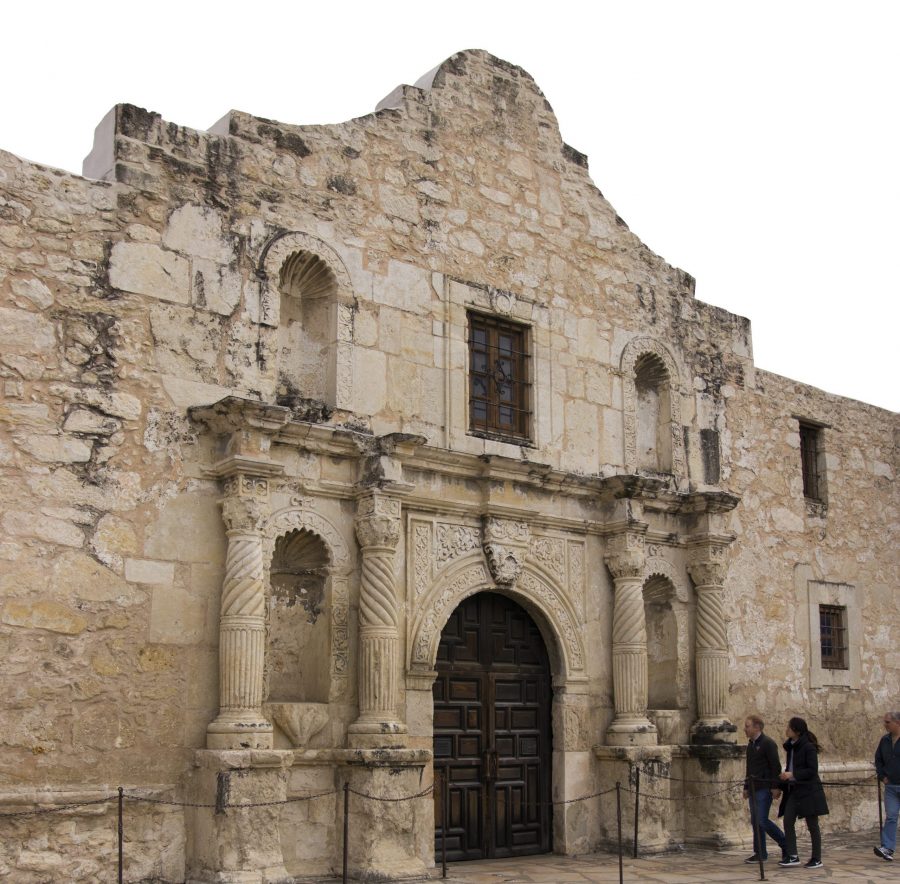300 year old San Antonio landmark to receive controversial $400 million renovation.
Judging from most public school textbooks, we do not remember the Alamo.
The City of San Antonio and the Alamo Plaza Advisory Committee don’t think so either, advancing a master plan that maps out renovations to the nearly 300-year-old mission and the surrounding streets and buildings located to the west of Alamo Plaza, set to be completed in 2024. The project will likely cost over $400 million, coming from sources including the Texas Legislature and the City of San Antonio.
“The project will return dignity and reverence to the site for the first time in 181 years,” said Alamo Management Committee Chairman Gene Powell said in a press release by Texas General Land Office; the office oversees daily operations of the Alamo grounds. “(It) will give the visitor a clear vision of the events that occured here in 1836 and over 300 years of layered history.”
The Alamo Master Plan seeks to renovate the grounds by restoring the Alamo mission and barracks, closing portions of South Alamo and Crockett street. They plan to remove and relocate various tourist shops and entertainment places like Ripley’s Odditorium, Guinness World Records, Tomb Raider 3D and other souvenir shops along Alamo plaza. They plan to create a museum west of Alamo Plaza using buildings from the Crockett block, that are filled with artifacts donated by Phil Collins; and restoring and (possibly) relocating the Alamo Cenotaph.
The Master Plan has already faced some controversy less than a year since its April 2017 unveil. When the design was first unveiled, city officials and citizens were opposed to the large glass walls that would surround Alamo grounds. According to the FAQ page of the Alamo Master Plan, the walls have since been tabled.
The Alamo Cenotaph, a memorial to Texas soldiers killed during the Battle of the Alamo in 1836 that was erected just adjacent to the church, could be moved to the location of one of the three funeral pyres, which are thought to be located at St. Joseph Church on Commerce Street and east of the grounds. A cenotaph is a monument dedicated to people who are buried elsewhere.
Plans have not yet been finalized where the cenotaph will be moved, if at all. Still, last year, protests occurred in front of the cenotaph opposing its relocation. The protesters, some of the descendants of those whose names are inscribed on the cenotaph, said they opposed the relocation because the soldiers had died where the cenotaph is erected.
Meetings on the Alamo Master Plan were largely closed door until this past December, where board members of the Alamo Endowment and Alamo Trust nonprofits voted to open their meetings to the public, facing criticism from the public and city officials for non-transparency.
Citizens can now attend the open door meetings held every three to four months.“We’re now in the design phase, and will be there for most if not all of 2018,” Bryan S. Preston, director of communication of Texas General Land Office, said.
PGAV Destinations, a design firm based out of St. Louis, Missouri, will be assisting in the design phase. The firm and the Texas General Land Office are planning a statewide “public engagement effort” to receive input in the design process for the Alamo Master Plan, in April or May.
“The next few years will be the most exciting in the Alamo’s post-1836 history,” Preston said. “We will be preserving the Alamo Church and Long Barrack, recapturing its 1836 battlefield to restore reverence to it and reunify it with the Alamo proper, and building the visitors center the Alamo has always deserved but does not have.”
“It seems like a continuation of the nation building process building the cultural imagination toward reverence for the state, regardless, or an engineered ignorance of the atrocities committed,” Matt Hinojosa, who has participated in protests with various activism groups in front of the Alamo, and is a UTSA anthropology and mexican american studies major, said. “What was the Alamo fought for? The upholding of slavery in a republic of people occupied by Anglo settlers, native people slaughtered or missionized and forced to assimilate, and Tejanos exploited for their labor, driven out, or lynched alone or en masse.
Before San Antonio even was Yanaguana, the area named for its sacred waters and springs, which is still held in reverence to Raza and indigenous folks of our beautiful city and throughout the hill country.
“About a year ago, educators from all over the state battled and won against a textbook on Mexican American History written by an Anglo woman with no background in the field, riddled with racist sentiment and factual errors, submitted for curriculum approval at the capital.
“Our histories have been left out. We’re fighting hard to get the young ones in the know, but we can’t even have folks acknowledge the prejudice exhibited by our president, much less the intellectual genocide of Alamo worship.”
The Alamo Master Plan is still conceptual, as of now. Final decisions on materials, design and exhibits have not yet been made, and updates have remained minimal. The only thing certain about the Alamo Master Plan is its controversiality, and the hope that those heading the renovations remember why they are doing so.








